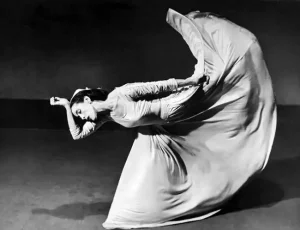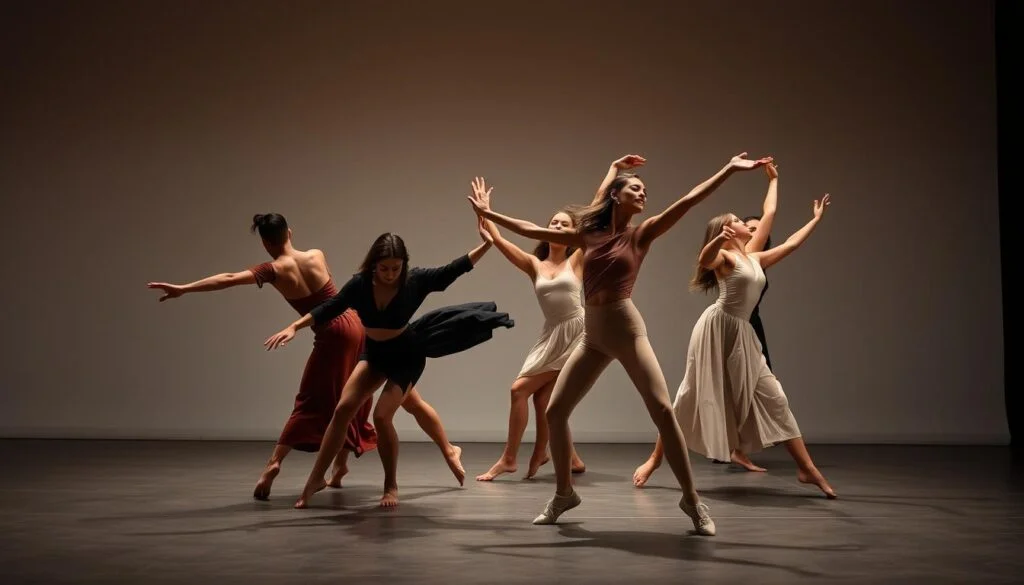Contemporary dance is more than just choreography — it is a living, breathing expression of the human spirit. It flows, shifts, and adapts, often defying the rigid structures of traditional dance genres. While ballet, jazz, and modern dance have distinct forms, contemporary dance is a fusion that draws inspiration from many sources, blending them into something deeply personal and profoundly moving.
In this article, we explore the heart of contemporary dance — its origins, its unique movement qualities, and why it continues to captivate dancers and audiences around the world.
The Origins of Contemporary Dance
 The roots of contemporary dance trace back to the mid-20th century, when choreographers began pushing beyond the boundaries of classical ballet and early modern dance. Influences from pioneers like Martha Graham, Merce Cunningham, and Isadora Duncan laid the groundwork for a style that embraced natural movement, emotional expression, and an openness to experimentation.
The roots of contemporary dance trace back to the mid-20th century, when choreographers began pushing beyond the boundaries of classical ballet and early modern dance. Influences from pioneers like Martha Graham, Merce Cunningham, and Isadora Duncan laid the groundwork for a style that embraced natural movement, emotional expression, and an openness to experimentation.
Unlike ballet’s strict technique or modern dance’s specific codified forms, contemporary dance evolved as a space where movement could be shaped by personal interpretation. This openness allowed choreographers and dancers to explore innovative ways of storytelling, using the body as an instrument of artistic freedom.
Movement as Flow
One of the defining characteristics of contemporary dance is its emphasis on fluidity. Movements often appear seamless, flowing from one phrase to another without sharp breaks. This “flow” is not just a technical choice — it reflects the emotional and thematic undercurrents of the performance.
For example, a choreographer might use smooth, continuous movement to convey the passing of time, the rise and fall of breath, or the ebb and flow of human relationships. In other cases, contrasting sharp bursts of motion within a flowing sequence can highlight moments of tension or release.
The Connection Between Body and Emotion
Contemporary dance thrives on emotional authenticity. While technique remains important, the intention behind the movement often matters just as much. Dancers are encouraged to connect personally to the themes of the choreography, infusing their performances with genuine feeling.
This emotional connection is what makes contemporary dance so compelling for audiences. Viewers can sense the honesty in the performance — the way a subtle reach of the arm or a slow tilt of the head can communicate vulnerability, longing, or joy.
The Role of Improvisation
Improvisation plays a central role in contemporary dance training and performance. By encouraging dancers to explore movement without predetermined steps, choreographers tap into raw, unfiltered creativity.
Improvisation sessions can lead to surprising discoveries — a small, instinctive gesture might evolve into the focal point of a dance piece. For many dancers, this process is both liberating and challenging, requiring them to let go of perfectionism and trust their instincts.
Music and Silence in Contemporary Dance
While music often guides the rhythm and mood of a dance, contemporary choreographers are not afraid to work without it. Dancing in silence or to unconventional soundscapes forces both dancers and audiences to focus on the movement itself, rather than relying on melody or beat for emotional cues.
When music is used, it can range from classical compositions to electronic beats, spoken word, or even ambient environmental sounds. This variety allows contemporary dance to remain fresh and adaptable to almost any creative vision.
Costume and Stage Design
Unlike classical dance styles that often use elaborate costumes, contemporary dance favors simplicity and functionality. Loose-fitting clothing, neutral colors, and bare feet are common, emphasizing natural movement and removing visual distractions.
Stage design can also vary widely — from traditional proscenium stages to unconventional spaces like warehouses, outdoor parks, or art galleries. These choices expand the possibilities for audience engagement and artistic expression.
The Universal Appeal of Flow in Motion
The heart of contemporary dance lies in its ability to resonate with a wide audience. Whether it’s a professional performance in a grand theater or a small experimental piece in a studio, the focus remains on authentic expression and human connection.
Dancers often describe contemporary movement as a conversation between the body and the world around them — a conversation that invites viewers to interpret and feel alongside them.
Conclusion
Contemporary dance is a constantly evolving art form that thrives on movement, emotion, and creativity. Its “flow in motion” is not just about physical transitions — it’s about the way stories, emotions, and ideas move through the dancer and into the audience’s experience.
For dancers, learning contemporary techniques opens the door to limitless artistic freedom. For audiences, it offers a glimpse into the raw beauty of human movement. In both cases, the heart of contemporary dance beats with a rhythm that belongs to no single style, but to the endless possibilities of expression itself.


